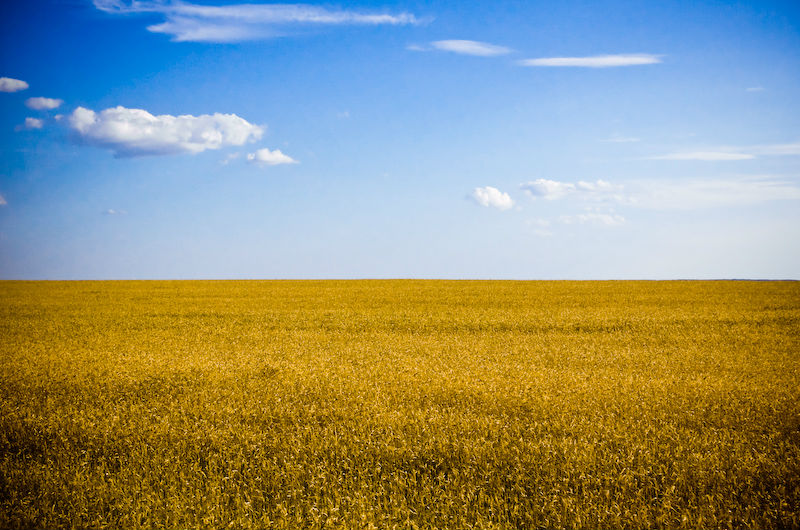 Ukraine’s system of agricultural production is paternalistic, dating back to the Soviet era, when bureaucrats constantly intruded into the production process. Such a strategy may have suited the planned economy, but in Ukraine’s market economy it has only spawned widespread corruption, because authorities cannot inspect every farm and business in person. EU standards allow producers more leeway in this regard, but this implies more responsibilities. So even though inspections continue, the regulatory agencies’ job is to check quality and standards—not meddle with the production process. Taras Kachka, former acting President of the American Chamber of Commerce in Ukraine, expressed optimism over the prospects for Ukrainian agriculture after the implementation of the Deep and Comprehensive Free Trade Area (DCFTA) between Ukraine and the European Union in a 2014 TV interview—noting that despite tremendous differences in production standards, Ukrainian legislation is catching up to the EU.
Ukraine’s system of agricultural production is paternalistic, dating back to the Soviet era, when bureaucrats constantly intruded into the production process. Such a strategy may have suited the planned economy, but in Ukraine’s market economy it has only spawned widespread corruption, because authorities cannot inspect every farm and business in person. EU standards allow producers more leeway in this regard, but this implies more responsibilities. So even though inspections continue, the regulatory agencies’ job is to check quality and standards—not meddle with the production process. Taras Kachka, former acting President of the American Chamber of Commerce in Ukraine, expressed optimism over the prospects for Ukrainian agriculture after the implementation of the Deep and Comprehensive Free Trade Area (DCFTA) between Ukraine and the European Union in a 2014 TV interview—noting that despite tremendous differences in production standards, Ukrainian legislation is catching up to the EU.
Kachka says Ukraine already exports a wide range of agricultural products—except exotic fruits—to many countries. DCFTA would help Ukraine by boosting competitiveness nationally and abroad; the adoption of EU standards will also help, due to gradual globalization of production standards.
Ukraine, blessed with all the natural resources it needs to develop a prosperous agriculture sector, has more than 40 million hectares of land available for crops; at least half this land boasts very high soil quality. In 2013, agriculture ranked third in economic importance after services (60.5 percent) and manufacturing (29.6 percent), accounting for more than 10 percent of GDP. In 2016, the Economist Intelligence Unit estimates that agriculture’s share of total GDP will rise by 3.3 percent, while manufacturing’s share will fall by 7 percent.
Yet Ukrainian agriculture is constrained by a number of factors including limited land availability; old infrastructure; insufficient financing; ineffective government development policies; questionable production quality; complicated customs regulations and weak control systems.
Under the DCFTA between Ukraine and the EU, Ukrainian farmers will save €330 million in duties on farm exports to the EU, and €53 million in duties on processed foods. Observers expect the opening of the EU market to Ukrainian agriculture will lead to more investments, increased modernization, and better working conditions.
For example, the DCFTA envisions duty-free deliveries of 1.6 million tons of grains to the EU during the first year of the accord’s implementation, gradually increasing to two million tons by the fifth year; likewise, poultry exports will rise from 16,000 to 20,000 tons over the same period.
But that won’t prevent Ukraine from supplying more if it can, said Vyacheslav Tsymbal, who heads European integration efforts at Ukraine’s Ministry of Economic Development and Trade, in an interview on February 26. Exporters would just have to pay the appropriate tariffs, which in this case would be quite low.
Most of the increase in Ukraine’s exports to the EU in 2014 were agricultural products like grains, corn, and edible oils. Transnational corporations export particularly large quantities and meet global production standards. Yet they ship mostly raw products. Only after Ukraine implements EU production standards will the export of canned food and other processed goods be a reality. For now, Ukrainian agribusiness hopes mainly to export more dairy products like milk and eggs, as well as beef and pork. Tsymbal suggested that within two or three years, Ukraine will be able to dramatically increase the export of agricultural products to the 28-member EU market.
The Ukraine-EU Association Agreement calls for mutual cooperation on agricultural and rural development “through gradual approximation of policies and legislation.” This includes improving administrative abilities to implement policies; focusing on rural development through knowledge- and practice-sharing; making Ukrainian agribusiness more attractive to investors, and endorsing high production standards.
Currently, Ukraine’s Ministry of Agrarian Policy and Food—with EU funding—is working on a project titled “Comprehensive Strategy for the Development of Agriculture and Rural Lands for 2015-20.” The project seeks to boost the competitiveness of Ukrainian agriculture while sustaining ongoing development in rural areas through the adoption of European and international standards.
With these steps, Ukraine is poised to become the breadbasket of Europe once again.
Oksana Khomei is a graduate of Warsaw’s College of Europe. Her master’s thesis was on “The Association Agreement between the European Union and Ukraine and the creation of a Deep and Comprehensive Free Trade Area (DCFTA).”
Image: Ukraine, blessed with all the natural resources it needs to develop a prosperous agriculture sector, has more than 40 million hectares of land available for crops; at least half this land boasts very high soil quality. Yet Ukrainian agriculture is constrained by a number of factors including limited land availability; old infrastructure; insufficient financing; ineffective government development policies; questionable production quality; complicated customs regulations and weak control systems. Credit: Creative Commons/Dobrych
